When you scan the daily headlines in baseball these days, you can almost overlook the fact that there are games actually being played. The irony of that is that in the competitive context of the 2020 campaign, each of those games means more, on average, than in any season that has come before.
You've heard the multiplier 2.7 mentioned time and again since MLB landed on a 60-game schedule in this pandemic-ravaged season. That's how much each game is worth in relation to a normal 162-game season. Through Monday, the most games any one team has played is 11, yet the schedule is already more than 15% complete. Actually, it's probably more than that, because it seems improbable that baseball will be able to make up all the games that have already been postponed, not to mention the postponements we suspect are still to come.
Consider the red-hot New York Yankees, who after beating the Phillies on Monday night had won seven straight and eight of nine overall. If you slap that 2.7 multiplier on the Bombers' record and round off the numbers, that translates to a 22-3 start. The Rays, largely considered to be New York's primary challenger for the AL East crown, have stumbled to an offense-challenged 4-6 mark, but magnified by the 2.7 lens, that's 11-16. You can look at Tampa Bay as already being 12 games behind New York in the standings. Game, set and match, right?
Not quite. The real standings aren't presented with a multiplier and so the Rays aren't 12 games back but 4½, and one hot week can make up the difference. That math hasn't changed but what has is the urgency. The short season doesn't prevent the Rays from making up that deficit, but the 2.7 lens underscores that the sooner they cut into it, the better. There will be no such thing as recovering from a bad month.
The Stock Watch is an in-season feature we've run the past few years near the beginning of each month to take a snapshot of the probabilities of how the season is going to play out and to consider why the probabilities have changed since our prior installment. As mentioned, the most games a team has played is 11, and the Marlins have played only four through Tuesday. Yet a good deal has changed since we last Stock Watched just before teams reported for summer camp:
1. More players have opted out (Lorenzo Cain, Yoenis Cespedes, etc.).
2. More players have gone down for the season (Eduardo Rodriguez, Mike Soroka).
3. Fifteen percent of the schedule has been completed, locking those results into any calculation of probable outcomes.
4. There will be six more playoff teams than we thought the last time the numbers were run, and every second-place team is guaranteed a ticket to October baseball. Kind of a big deal.
With all that in mind, and so much else looming over the season, we will proceed with a strictly on-the-field look at how things are unfolding. Before we get into the teams, let's visit a few league-level factoids from the simulations, since it's the first time we've run them after the playoff format was expanded.
- Average wins, division champion: 39 (AL East 41; AL Central 39, AL West 37; NL East 37, NL Central 37, NL West 39)
- Average wins, wild card No. 1: 36
- Average wins, wild card No. 2: 33
- Average wins, wild card No. 3: 31 (13% chance a below .500 team wins spot)
- Average wins, wild card No. 4: 32 (7% below .500)
- Average wins, wild card No. 5: 30 (34% below .500)
- Average wins, AL pennant winner: 36 (6% below .500)
- Average wins, NL pennant winner: 36 (3% below .500)
- Average wins, World Series winner: 37 (3% below .500)
Keep in mind that in this season's format, the first- and second-place teams in each division are guaranteed a slot, and that means that in many scenarios, one of those teams will actually have a worse record than the fourth and fifth wild cards in a league, which will be awarded to the two best remaining teams, regardless of division. That's why the average fourth wild card shows up as better than the average third wild card.
One final note: Out of 10,000 simulated seasons, 11 of them ended with a World Series matchup between teams with below .500 records. Thanks, 2020.
Power rating: 102.3
Win forecast: 40.9 | Change from July: +3.5
Division%: 92.8 | Playoff%: 99.9
Pennant%: 24.6 | Title%: 16.3
When the 1981 season was shortened by a strike, a quirky split-season format was adopted and the playoff field was expanded. But the Yankees and Dodgers ended up in the World Series for the third time in five years, which helps to validate the outcome of that season in the context of history. Something similar could happen in 2020, though in a different fashion. These are still arguably the marquee franchises in baseball. But what would help boost the validity of this season is that in my objection projections of the season before everything was thrown into the pandemic hopper, the Yankees and Dodgers were flagged as the respective favorites in their leagues. Nothing we've seen in the early going has suggested those projections were wrong. At the same time, the '81 Dodgers and Yankees didn't have to survive a 16-team bracket.
Power rating: 101.1
Win forecast: 38.1 | Change from July: +0.3
Division%: 77.3 | Playoff%: 98.8
Pennant%: 33.5 | Title%: 20.0
On one hand, the Dodgers are doing what great Dodgers teams do, which is smother opposing offenses. L.A. racked up a 2.14 team ERA over its first 11 games. But what's strange is that the Dodgers strikeout rate of 7.9 per nine innings ranked just 26th in the majors. Surely that number will rise, as L.A. projected to rank ninth in the majors in K's. But if not, it'll be tough to survive the playoffs in current competitive conditions with that many balls in play. One thing regarding 2020 SO/9 figures: Early on, that figure was 9.1 whiffs per nine innings. It's the highest in history, which is something we get to write every year. (Yay!) But for the first time, this means that if a pitcher averages right at a strikeout per inning, he is a tick below league average.
Power rating: 95.7
Win forecast: 35.1 | Change from July: -1.6
Division%: 62.2 | Playoff%: 95.3
Pennant%: 18.3 | Title%: 10.1
With Justin Verlander ailing, the Astros have some real concerns about their rotation, though the great early work by the Houston bullpen has helped keep things afloat. As for those hoping or even predicting a post-scandal cratering of the Astros' offense, well, Houston's 5.78 runs per game rank second in the majors in the early going. And that's with Yordan Alvarez yet to play, and the highest batting average among Alex Bregman, Jose Altuve and George Springer being Bregman's .211 mark. You might want to believe that the scandal and those numbers are directly related, but chances are, you will be disappointed. This remains one of baseball's elite offenses.
Power rating: 93.9
Win forecast: 38.5 | Change from July: +3.3
Division%: 76.8 | Playoff%: 99.6
Pennant%: 15.9 | Title%: 8.6
The Twins' offense has been feast or famine thus far, but the pitching has been terrific. Minnesota's relievers have held opponents to a .197 average, and in high-leverage spots, the Twins have held hitters to a 3-for-26 performance. The homers are still there on offense and the starting pitching has been stable. If you add a shutdown bullpen to the mix, it's a good formula to have in place for a marathon postseason.
Power rating: 92.4
Win forecast: 34.1 | Change from July: -0.5
Division%: 45.1 | Playoff%: 89.0
Pennant%: 15.2 | Title%: 7.7
The Nationals' power rating is still being propped up by their preseason projection and that might not be as misleading as Washington's so-so start might indicate. What hasn't been misleading is this: With Anthony Rendon on the other coast, the Nationals' lineup without Juan Soto in it looks tepid. The sooner Soto ramps back up, the sooner the Nationals will take on the look of a team defending a championship.
Power rating: 92.0
Win forecast: 32.5 | Change from July: -0.7
Division%: 6.3 | Playoff%: 85.8
Pennant%: 11.6 | Title%: 5.7
The Rays were understandably a popular choice when people were identifying teams constructed for the oddities of this season. For one thing, the need for roster versatility and the piecemeal approach to creating matchups is kind of what the Rays already do. The Tampa Bay offense has struggled, particularly when you consider their sweep at the hands of Baltimore, but the return of Austin Meadows should shore up the Rays' attack. However perhaps the most disappointing part of the Rays' start has been the defense. Tampa Bay ranks last in the majors in defensive efficiency (.647) and has committed five more errors (11) than they have turned double plays (6). The Rays have not played like the Rays.
Power rating: 89.8
Win forecast: 34.5 | Change from July: +0.8
Division%: 44.7 | Playoff%: 92.3
Pennant%: 13.0 | Title%: 5.9
The loss of Mike Soroka for the season during Monday's game because of an Achilles injury is a body blow to the Braves. While we've noted in recent years that Atlanta has waves of young arms, the fact of the matter is that in a win-now season, the rotation suddenly looks thin.
Soroka is a bona fide ace. Max Fried could be one, as well, and he became the most likely starter to emerge as a Game 1 postseason starter now that Soroka is out. But Mike Foltynewicz was DFA'd from the active roster, and Kyle Wright, Sean Newcomb and Touki Toussaint have all been hit hard early. The bullpen has been great, and right now the Braves badly need that group to keep up the dominance, and hope that when Cole Hamels returns to action, he can help stabilize the starting staff. Unfortunately, Hamels' return still looms beyond the short-term horizon.
Power rating: 88.4
Win forecast: 33.0 | Change from July: 0.0
Division%: 30.7 | Playoff%: 88.2
Pennant%: 9.2 | Title%: 4.0
Even in a season in which the league batting is a worst-in-the-history-of-Earth .233, Oakland's .204 team mark is problematic. Yes, this is a take-and-rake offense, but you've got to pepper in a few hits now and again if you want to go far. The good news is that the A's can confidently look for much better numbers from their established stars than what they've gotten so far, a group that includes Matt Olson, Marcus Semien and Matt Chapman. That said, while Khris Davis is surely better than a .125/.250/.250 hitter, after last season, you do have to start wondering if last year's decline was the real deal.
Power rating: 87.6
Win forecast: 33.0 | Change from July: -1.5
Division%: 11.9 | Playoff%: 87.9
Pennant%: 8.5 | Title%: 3.9
What is the real story for the Indians? Is it how great the starting pitching has been? Or is it that how bad the rest of the roster outside of Jose Ramirez has been? The Cleveland offense has been brutal, to the tune of a .190 average and a .277 slugging percentage through 11 games. And in most seasons, we'd say, "Oh, it's just 11 games," but in 2020 that's more than one-sixth of the schedule. The Cleveland offense had better pick it up because even while the Indians have one of baseball's five best rotations, maintaining their early 91% quality start rate is an awful lot to ask.
 10. San Diego Padres
10. San Diego Padres
Power rating: 86.7
Win forecast: 33.0 | Change from July: +2.1
Division%: 14.6 | Playoff%: 84.0
Pennant%: 8.8 | Title%: 3.4
The Padres have been fun to watch so far, though not entirely for reasons that are good for San Diegans. The offense has raked in the early going with a good mix of power and speed. The Friars' 17 steals through Monday represents about 14% of all stolen bases in the big leagues this season. But the other reason San Diego's games have been fun is because of late-inning drama caused by the poor start of closer Kirby Yates. On one hand, we shouldn't jump to any conclusions. On the other hand, we've seen in the past few years that the proud tradition of late-inning relievers going from unassailable to unwatchable (think Blake Treinen and Edwin Diaz) is alive and well.
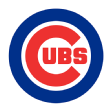 11. Chicago Cubs
11. Chicago Cubs
Power rating: 85.2
Win forecast: 34.9 | Change from July: +2.5
Division%: 58.6 | Playoff%: 91.6
Pennant%: 9.3 | Title%: 3.6
The Cubs are in a strong position, with an 8-2 start that translates to 22-5 with the 2.7 multiplier. Again, that's one-sixth of the season, and those wins are in the books. Still, Chicago's performance has been a mixed bag against what in retrospect might end up looking like an awfully soft early schedule. On the bright side, the offense has been solid, despite Kris Bryant's slow start. Also, the rotation has been terrific, with Tyler Chatwood looking better than he has at any point since his arrival in Chicago and Alec Mills turning in some good work, albeit with a 1.4 K/BB ratio. However, the bullpen that loomed as a sore spot before the season has been exactly that. Plus, there has been no more disappointing player in baseball so far than closer Craig Kimbrel, who has yielded a walk, homer or HBP to seven of the 11 batters he has faced.
Power rating: 83.1
Win forecast: 31.4 | Change from July: -1.2
Division%: 20.1 | Playoff%: 68.7
Pennant%: 4.8 | Title%: 1.9
The focus in St. Louis right now is getting their places healthy and, eventually, out of Milwaukee. When they resume play, you have to wonder how long it will be before the Redbirds juggle a flagging offense. Defensive whiz Harrison Bader has looked increasingly unplayable at the plate. He's 1-for-11 so far, which drops his average since the beginning of last season to .201 over 419 plate appearances. You have to wonder how much longer St. Louis can wait to summon Dylan Carlson to shake up the outfield mix.
Power rating: 82.8
Win forecast: 32.8 | Change from July: +1.5
Division%: 11.2 | Playoff%: 86.0
Pennant%: 5.7 | Title%: 2.1
The future has begun to come into focus for the White Sox, with Luis Robert more than living up to advance hype. Nick Madrigal has been activated after being service-timed and has at least given one glimpse of his skill set with a four-hit game at Kansas City. White Sox pitching is not at the level of an offense that has the potential to be among the five best in the game -- this year.
There is an ironic thing about the postseason expansion for teams like the White Sox and Padres, who in the original format seemed poised to emerge from rebuilding periods to move onto the fringes of playoff contention. Before, a run at a postseason spot would have been viewed as a great season and a harbinger of success in the years to come. Now, if they miss the postseason in a 16-team free-for-all, the season takes on a flavor of disappointment.
Power rating: 81.6
Win forecast: 28.7 | Change from July: -1.6
Division%: 6.3 | Playoff%: 42.2
Pennant%: 3.0 | Title%: 1.1
With only four games on the dossier, it's awfully difficult to make any cogent observations about the Phillies. They haven't even gone a full time through the rotation, for starters. The one thing you can offer is that the 5-for-15, two-homer start for new shortstop Didi Gregorius is highly encouraging.
 15. Texas Rangers
15. Texas Rangers
Power rating: 80.8
Win forecast: 28.0 | Change from July: -0.6
Division%: 4.6 | Playoff%: 40.9
Pennant%: 2.3 | Title%: 0.8
The losses of starter Corey Kluber and back-end reliever Jose Leclerc have already marred the Rangers' start. Beyond that, the Texas offense has been largely unwatchable. Joey Gallo has been terrific, when healthy, since the beginning of last season. Beyond that, the offense is a bunch of guys just flailing away.
 16. New York Mets
16. New York Mets
Power rating: 80.8
Win forecast: 28.4 | Change from July: -2.4
Division%: 3.7 | Playoff%: 36.3
Pennant%: 2.7 | Title%: 0.8
Edwin Diaz again looks like a mess and that jumbles the Mets' bullpen design, and Rick Porcello has been hit hard so far. But let's talk about Yoenis Cespedes' decision to opt out. The decision itself requires no defense. Any player who does not want to take on the risk to play this season has the right to do so, and there is no shame in it. This is strictly about the baseball ramifications and the fact of the matter is that if Cespedes' departure gets Dominic Smith in the lineup every day, New York's offense might be the better for it. Pete Alonso has started slow but has at least been accepting walks. If Smith can continue the progress he began last season, the Mets' everyday lineup could be free of holes -- provided, of course, that everyone stays healthy.
Power rating: 80.5
Win forecast: 27.0 | Change from July: -3.1
Division%: 2.3 | Playoff%: 30.1
Pennant%: 1.5 | Title%: 0.6
The expanded format breathes real life into hopes that we might get to see Mike Trout in his second career playoff series, but even so, the Angels still stand less than a one-in-three shot at getting in. The rotation has received good work from the trio of Andrew Heaney, Griffin Canning and Dylan Bundy, but the drop-off from there has been steep. That includes the brief return to the mound for Shohei Ohtani, who now seems destined to be looking at that 37.80 ERA for 2020 for the rest of his career. While the Angels scramble for other pitching solutions, the offense could be coming into focus soon. Trout is back after a happy respite for the birth of his first child and exciting prospect Jo Adell has been promoted to get his big league career going.
 18. Cincinnati Reds
18. Cincinnati Reds
Power rating: 80.2
Win forecast: 30.2 | Change from July: -0.2
Division%: 11.1 | Playoff%: 54.8
Pennant%: 3.1 | Title%: 0.9
The issue for the Reds is told in their respective standing in the pitching categories of Baseball-Reference.com's wins above average by position summary. The Cincinnati rotation has been baseball's best in the early going in the aggregate. The Reds' big three of Sonny Gray, Trevor Bauer and Luis Castillo is dynamic. However, not only does the Reds' bullpen rank dead last on the same table, but the struggles of that group have entirely sucked up the value created by the starters. Opponents have an .841 OPS against the Reds over 56 high-leverage at-bats so far.
 19. Boston Red Sox
19. Boston Red Sox
Power rating: 79.8
Win forecast: 27.0 | Change from July: -4.1
Division%: 0.3 | Playoff%: 28.7
Pennant%: 1.4 | Title%: 0.4
Has the outlook for any team suffered as much as the Red Sox since the beginning of last season? Coming off their 2018 title, Boston started last season with a baseline projection of 98 wins and a 96% shot at the postseason. They have since dropped to a sub-.500 baseline and just over a one-in-four chance of squeezing into an eight-team AL playoff.
All of this might have something to do with losing Mookie Betts, Chris Sale and Eduardo Rodriguez off that championship roster. While you wouldn't necessarily bet on the Red Sox dropping below the Orioles and into the AL East cellar, you can't entirely rule it out, either.
 20. Colorado Rockies
20. Colorado Rockies
Power rating: 79.5
Win forecast: 31.3 | Change from July: +5.0
Division%: 7.4 | Playoff%: 64.9
Pennant%: 3.5 | Title%: 1.0
Speaking of dramatic changes in fortune: The Rockies entered summer camp with a baseline projection for 26.3 wins which, in the 10-team format, translated to a 5.7% shot at the postseason. That baseline has vaulted by five wins already, and with the playoffs becoming much more inclusive, the Rockies suddenly have nearly a two-in-three shot at a Rocktober. Colorado needs to figure out the back of its bullpen, but the rotation has been tremendous. And the best news of all is that the Rockies have raced up the pecking order even though Nolan Arenado is off to a slow start. That will change any day now.
Power rating: 77.5
Win forecast: 29.9 | Change from July: -0.7
Division%: 10.1 | Playoff%: 48.7
Pennant%: 2.3 | Title%: 0.7
The Brewers' start has been bleak. First, they struggled in a season-opening series at Chicago. Then their home-opening series against St. Louis was wiped out by the Cardinals' COVID-19 outbreak. Then, coincidental to the St. Louis situation or not, Lorenzo Cain decided to opt out of the season. And then there is this: Christian Yelich, even after a two-hit game Monday, was just 3-for-31 in the early going. Yelich will be fine, but Cain's absence puts the onus on Ben Gamel to approximate as much of Cain's two-way value as he can muster.
Power rating: 76.6
Win forecast: 26.3 | Change from July: -2.9
Division%: 0.5 | Playoff%: 15.1
Pennant%: 0.6 | Title%: 0.2
The Diamondbacks started 2-6 against the Dodgers and Padres, their chief competitors in the NL West. Overall, Arizona's minus-25 run differential is the worst in the majors. The quality of competition might have a lot to do with that, but the fact remains that the D-backs have struggled across the board. Suddenly, a sleeper contender finds itself with an uphill battle to get back into the contention picture. If they are to accomplish that, they'll need to tack on more than a few points to their MLB-worst .533 team OPS.
Power rating: 73.5
Win forecast: 26.9 | Change from July: +0.4
Division%: 0.5 | Playoff%: 27.5
Pennant%: 0.8 | Title%: 0.2
Next week, the Buff-a-Jays will return big league baseball to upstate New York for the first time since the demise of the Federal League after the 1915 season. (Unless you want to count filming "The Natural.") And if you only want to consider the extant major leagues, there hasn't been an AL or NL tilt in Buffalo since October 7, 1885. In this odd season, the Jays have real hope of landing a playoff spot. To get there, they'll need Vladimir Guerrero Jr. to shake off his 5-for-29 start. Perhaps Buffalo will help: Guerrero hit .397 there after being promoted to Triple-A in 2018.
Power rating: 70.9
Win forecast: 24.5 | Change from July: -0.4
Division%: 0.1 | Playoff%: 9.4
Pennant%: 0.2 | Title%: 0.0
The Royals' collective lack of strike-zone command as an offense can be maddening to behold. That was already that case before KC acquired Maikel Franco. Franco hasn't been the Royals' worst hitter, or anything close to it, but he exacerbates what has long been an organizational blind spot. Franco has shown legit pop on contact -- when he makes contact. But he has struck out 11 times without walking, leaving him with one of those Medusa-like batting lines where his average is higher than his on-base percentage. The good news is that KC's bullpen looks more stable this season -- a low bar, to be sure -- and young starters Brady Singer and Kris Bubic have graduated to the majors.
Power rating: 68.8
Win forecast: 25.0 | Change from July: +1.4
Division%: 0.2 | Playoff%: 8.9
Pennant%: 0.2 | Title%: 0.0
Look, it's early days in the Giants' rebuild. You can look at the lineup some nights and still see Pablo Sandoval, Hunter Pence (who has started 1-for-26), Brandon Crawford and Brandon Belt in it. Jeff Samardzija looks done. The playoffs, even in a season like this, are a long shot. But the feel-good stories of second-chance stars Donovan Solano and Mike Yastrzemski continue unabated. Solano was hitting over .450 and leading the majors in RBI at last glance. Meanwhile, neo-Yaz gets on base nearly half the time and if you leave something in the zone against him, it might well end up in McCovey Cove. As the Giants wait for their next young core to emerge, it's R&D successes like that on which fans can hang their proverbial hat.
Power rating: 67.2
Win forecast: 21.9 | Change from July: -3.8
Division%: 0.2 | Playoff%: 2.0
Pennant%: 0.0 | Title%: 0.0
Good gosh, the Pirates are really bad. Maybe not as bad as they've looked -- they aren't the early-season Bad News Bears or anything -- but they are not ... good. The Pirates' offense projected to be bottom 10, perhaps bottom five. Insofar as there was a strength, it was hitting for average, where the Bucs figured to be in the middle of the pack. Through Monday, Pittsburgh's .187 average was the worst in the majors. When you collectively lack the secondary skills to prop up a poor average, and your average is that bad, it's a rough combination. The Bucs have done this even though Colin Moran has homered five times and has a 1.072 OPS.
 27. Seattle Mariners
27. Seattle Mariners
Power rating: 66.1
Win forecast: 23.2 | Change from July: -0.5
Division%: 0.2 | Playoff%: 5.3
Pennant%: 0.1 | Title%: 0.0
There are some bright spots here, at least there was until the Mariners' offense hit the skids over their past three games against Oakland. Still, let's focus on the positive. Evan White hasn't hit -- like, at all -- but he has shown that his glove work is as good as billed. J.P. Crawford has been dynamic in the early going. And Kyle Lewis has put up big numbers (1.028 OPS) while demonstrating a certain amount of joie de vivre in the early going. All of these guys should be centerpieces on Seattle's next good team. As that core grows with the eventual addition of prospects like Jarred Kelenic and Julio Rodriguez, that team might not be all that far away.
Power rating: 64.9
Win forecast: 24.9 | Change from July: +3.9
Division%: 0.1 | Playoff%: 11.9
Pennant%: 0.1 | Title%: 0.0
OK, so these Orioles are a bunch of castoffs. It's a transitional group meant to bide the time until Baltimore's revamped farm system starts to pay dividends. Jose Iglesias is a light-hitting career shortstop who has DH'd in some games early in the season. Hanser Alberto swings at everything, has little power, even less athleticism and has hit .313 since the beginning of last season. Tommy Milone has a career 90 ERA+, is in his seventh organization over 10 big league seasons and started Baltimore's first game.
It might seem as if the Orioles haven't beaten the Yankees since Earl Weaver managed the team. Yet ... Baltimore has been competitive, largely because the Orioles' front office has done a great job on the second-chance market. A first-overall-pick outcome remains much more likely than a postseason slot. Yet, strangely, these O's are very easy to root for.
 29. Miami Marlins
29. Miami Marlins
Power rating: 60.2
Win forecast: 22.1 | Change from July: +0.6
Division%: 0.2 | Playoff%: 2.7
Pennant%: 0.0 | Title%: 0.0
Ugh. What can you say, really? The Marlins franchise has often taken the form of a cautionary tale during its brief history. Let's hope this latest one is a tale other teams hear. Owner Derek Jeter said the club simply let its guard down. The lesson is crystal clear: With this virus, you just can't do that. Hopefully all the infected Marlins get through this in good shape and other teams -- and MLB itself -- learn from the problems that Miami and St. Louis have encountered. If they don't, we will never get through this season.
 30. Detroit Tigers
30. Detroit Tigers
Power rating: 60.0
Win forecast: 22.7 | Change from July: +0.5
Division%: 0.1 | Playoff%: 3.8
Pennant%: 0.0 | Title%: 0.0
The Tigers have 120 total bases over their first 10 games. JaCoby Jones has 23 of those, with a .379/.419/.793 line and good defense that has marked him -- stunningly -- as one of baseball best players over the first couple of weeks. Removing Jones from the mix, the Tigers are hitting .186/.258/.354. The stop-and-start nature of the Tigers' schedule certainly has not helped.

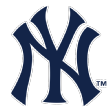 1.
1.  2.
2.  3.
3.  4.
4. 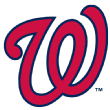 5.
5.  6.
6.  7.
7. 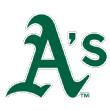 8.
8.  9.
9.  12.
12. 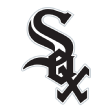 13.
13.  14.
14. 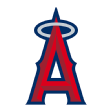 17.
17. 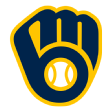 21.
21.  22.
22.  23.
23.  24.
24.  25.
25.  26.
26.  28.
28.